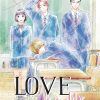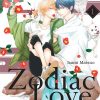Ghost in the shell, Berserk, Fullmetal Alchemist, Naruto, Nana, Demon slayer … All of them are recognized as must-read classics in manga literature. Timeless, these manga have established themselves with originality and uniqueness. These Mangas with a capital M have marked the history of manga with indelible ink because of their unique way of creating narrative codes, and the many screenwriting revolutions. However, are the manga we consider must-read are the same as in the Land of the Rising Sun? On the way to our weekly meeting!
Kochikame
In 2016, the manga Kochikame entered the Guinness Book of World Records as the longest manga series in history; from the height of its 200 volumes and its unpronounceable name: Kochira Katsushikaku Kameari Kouenmae Hashutsujo, which literally means: “This is the police station in front of Kameari Park in Katsushika district” is officially the manga with the most volumes for a single series.
The manga tells the daily life and the misadventures of Kankichi Ryotsu nicknamed Ryo-San in small short stories. Akimoto Osamu, the author, after more than 40 years in pre-publication and at the ripe old age of 69, did not hesitate for a moment and jumped straight into the development of four new series. No rest for the brave (laughs). Kochikame had such a strong impact in Japan and more precisely in the mangakas’ community, that when its final volume was released, several dozen mangakas paid tribute to it. In addition, bronze statues were erected in Tokyo in the series’ honor, just like One Piece. Kochikame is and will remain a big name in manga history for sure.
Ashita no Joe
Better known outside Japan, Tetsuya Chiba’s manga is one of the great titles that have shaped today’s manga universe. He also happens to be the creator of a new genre of sports manga. For Tetsuya Chiba, sports manga written only to show sports did not interest him. He decided to use sport as a tool in his stories, a way to get his hero out of his misery.
Street child, brawling orphan and buck wild, Joe Yabuki has not it easy. Under the wing of a former alcoholic boxer, his life might change dramatically. This master can detect the innate talent of our hero but he is not easy on Joe. A real mad dog attached to his freedom and independence; the latter will offer the master a lot of difficulties.
A timeless classic, Ashita no Joe went so far as to establish a narrative code that we still find today in the shônen and the seinen: the famous simultaneous punch during a duel. Riku-do, Mutsubara Toshimitsu’s manga, or Fighting Rooster, will succeed several years later in reviving the same fury present in Ashita no Joe.
Kinnikuman
Written by a mangaka duo who work together under the incredible pseudonym Yudetamago, literally “hard-boiled egg”, Kinnikuman is a very popular manga. Only available in Japan, Kinnikuman tells the story of Suguru, crown prince of the planet Muscla, who was mistakenly propelled when he was still an infant into the junk chute of his parents’ spaceship as it passed off planet Earth. Several years later, having become a Japanese like the others, his two friends will join forces to make Suguru a superhero. Unfortunately, while the vibe promises a very funny and unconventional manga, there is no paper translation other than its Japanese version. Very influential in Japanese culture, Kinnikuman was one of the heroes who play a good part in the childhood of many young Japanese people.
Anpanman
Speaking of heroes, it is impossible not to talk about Anpanman! Written by Takashi Yanase, it’s not really a must-read manga, but it is so important to the Japanese that I couldn’t leave it out. It is probably THE reference for Japanese children.
This one tells the adventures of Anpanman, the superhero filled with anko / azuki paste. The head of our little superhero is a piece of bread called “anpan” and filled with the sweet red bean paste used as the basis for traditional candies. Wanting to give children an example to follow, good always outweighs evil, it is a question of sacrifice to bring about justice. The series is not afraid to allow its main character to sacrifice himself to feed the hungry people, thus making the supreme sacrifice of his person! The series pushes its originality even further since all the characters in the series have an edible head associated with their name: Uncle Jam for ” Uncle Jam ”, Currypanman, Shokupanman has sliced bread for a head, Melonpanna, a bread melon, and so on … Concept that Akira Toriyama will use in Dragon Ball to name his characters. The manga is so disproportionate that it too has entered to be the series with the most characters in its narrative. The manga is made up of over 1,700 different characters.
There are tons and tons of manga that made history. This multitude of books that we have never, or rarely seen, are omnipresent in Japanese culture. I could also have told you about Doraemon, Golgo 13, Lupine the 3rd (which was recently announced in French by Kana and in English by Seven Seas!), Sazae-san, or even Osomatsu-san, which we know little in the West thanks to its anime). Japan is full of manga that we will probably never have the opportunity to read in our language. The international manga museum in Kyoto, entirely dedicated to the ninth Japanese art, will make you spin with its 300,000 different manga! It is always quite dizzying to realize a fortiori that the manga as we know it represents only a tiny part of the existing ones.
The Author
Browse the blog
Latest posts
- Read more >
BEASTARS
21 March 2022 - Read more >
JUJUTSU KAISEN
21 March 2022 - Read more >
ATTACK ON TITANS
21 March 2022








